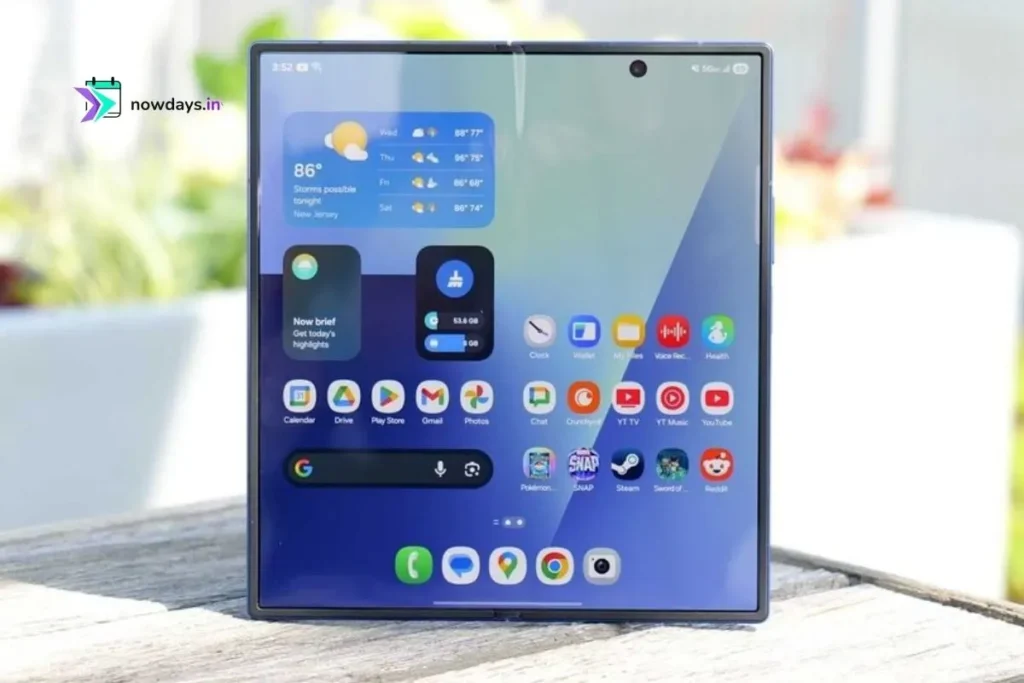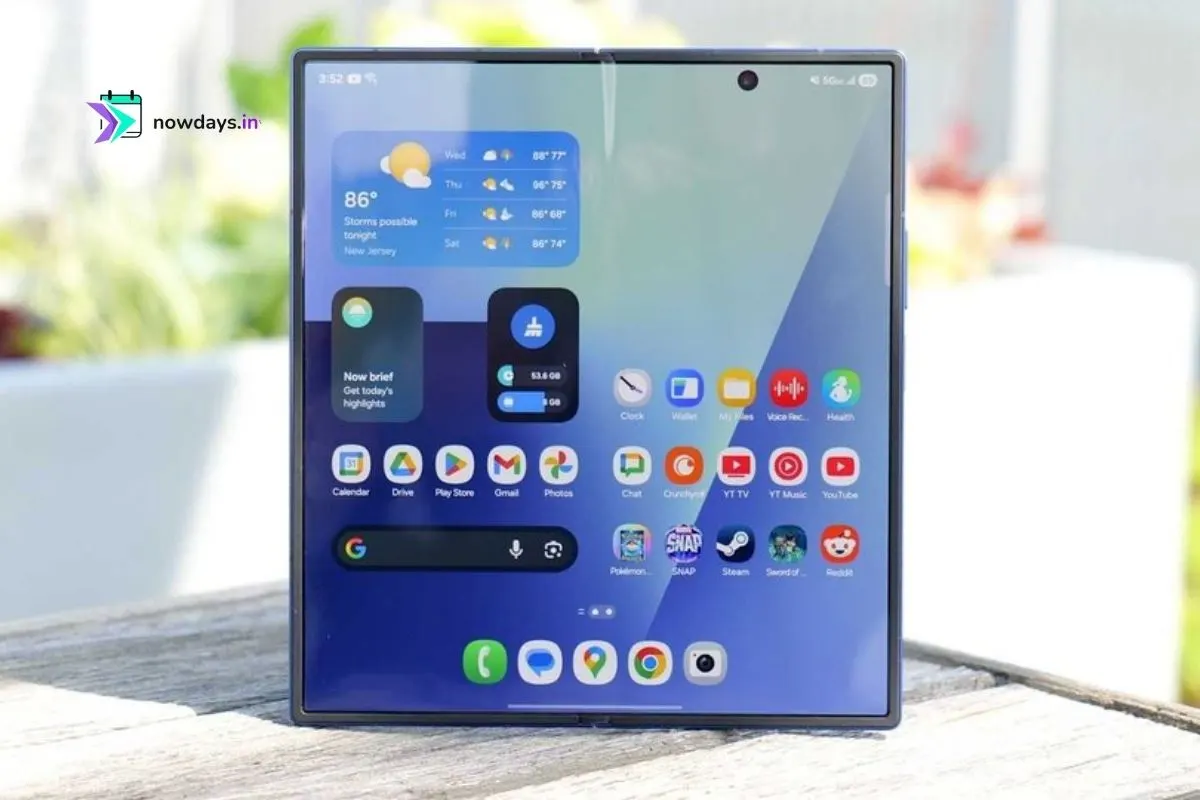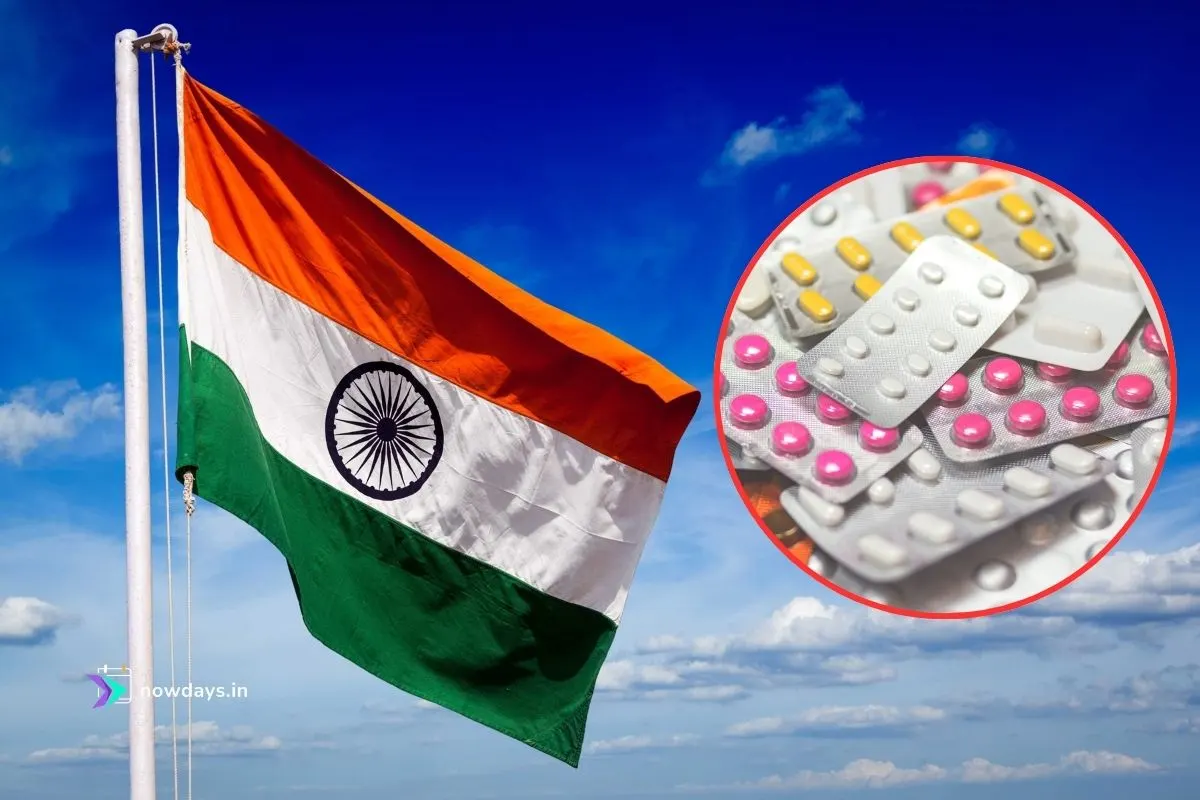The Indian smartphone landscape witnessed a seismic shift on July 9, 2025, when Samsung Electronics launched its seventh-generation foldable smartphones, receiving an unprecedented 2.1 lakh pre-orders within just 48 hours. This remarkable response has shattered expectations and signalled a fundamental transformation in how Indian consumers perceive foldable technology – no longer as experimental gadgets but as mainstream premium alternatives.

The magnitude of this achievement becomes even more striking when compared to Samsung’s own flagship Galaxy S25 series, which garnered 4.3 lakh pre-orders over nearly three weeks. For the initial 48-hour window, the foldable series has matched the Galaxy S25’s pace, marking what industry observers call a watershed moment for the foldable category in India.
Read more: Apple’s iPhone 17 Pro Could Feature Reflective Transparent White and Bold New Colors
The Numbers Tell a Compelling Story
Samsung’s latest foldable lineup, comprising the Galaxy Z Fold7, Galaxy Z Flip7, and Galaxy Z Flip7 FE, has delivered what the company describes as “nearly equalling the pre-orders received for the Galaxy S25 series earlier this year”. This performance is particularly remarkable given that foldable phones represent just 1.5% of the global smartphone market according to IDC data5, yet they account for 16% of Samsung’s sales value for devices priced over $800.
The pre-order success comes despite premium pricing that positions these devices firmly in the super-premium segment. The Galaxy Z Fold7 starts at ₹1.75 lakh and goes up to ₹2.11 lakh, while the Galaxy Z Flip7 is priced between ₹1.10 lakh and ₹1.22 lakh. The most accessible model, the Galaxy Z Flip7 FE, starts at ₹89,000, representing Samsung’s strategic push to democratize foldable technology.
Made in India: Local Manufacturing Drives Consumer Confidence
A crucial factor driving this success is Samsung’s “Made in India” initiative, with all three foldable models manufactured at the company’s Noida factory. This local production not only supports Prime Minister Modi’s Make in India vision but also provides cost advantages that help maintain competitive pricing despite the advanced technology involved.
JB Park, President and CEO of Samsung Southwest Asia, emphasised this significance: “The record pre-orders for our Made-in-India foldable smartphones reinforce our belief that young Indian consumers are quick to adopt the latest technology”. Park positioned these devices as “a stepping stone for our larger goal – the mainstreaming of foldable smartphones in India”.
Revolutionary Design: The Thinness Factor
The Galaxy Z Fold7 represents a dramatic engineering achievement, measuring just 8.9mm when folded and 4.2mm when unfolded. At 215 grams, it’s actually lighter than the Galaxy S25 Ultra, addressing one of the primary consumer concerns about foldable devices – their bulk and weight.
This transformation is particularly significant when compared to Chinese competitors who have been leading the race for thinner foldables. Honor’s Magic V5 measures 8.8mm when folded, while Oppo’s Find N5 is 8.93mm thick. Samsung’s ability to match these dimensions while maintaining durability and feature completeness represents a crucial competitive milestone.
The Galaxy Z Flip7 similarly achieves a remarkable 13.7mm thickness when folded, making it Samsung’s slimmest Flip model yet. Both devices incorporate advanced materials including Titanium frames, Armor FlexHinge technology, and Gorilla Glass protection, ensuring durability alongside the sleek profile.
Read more: India’s First AI Teacher, ‘Iris’, Introduced by Kerala School
Global Success Pattern: Beyond India’s Borders
India’s enthusiastic response mirrors global trends, with Samsung’s foldables breaking pre-order records in multiple markets. In South Korea, Samsung’s home market, the Galaxy Z Fold7 and Z Flip7 achieved 1.04 million pre-orders, surpassing the 1.02 million record set by the Galaxy Z5 series.
Remarkably, this marks the first time the Galaxy Z Fold has outsold the Galaxy Z Flip in pre-orders, with the Fold7 accounting for 60% of pre-orders versus the Flip7’s 40%. This reversal of historical patterns, where the Flip traditionally dominated with 70% of pre-orders, suggests that consumers are increasingly viewing book-style foldables as practical productivity tools rather than novelty items.
Technological Advancement: Beyond Form Factor
Samsung’s seventh-generation foldables introduce substantial technological improvements beyond their slimmer profiles. The Galaxy Z Fold7 features Samsung’s first 200MP camera system in the Z series, previously exclusive to the Galaxy S flagship line. This represents a significant upgrade from the 50MP system in previous Fold models.
Both devices run on cutting-edge processors – the Galaxy Z Fold7 utilizes Qualcomm’s Snapdragon 8 Elite chipset, while the Galaxy Z Flip7 is powered by Samsung’s Exynos 2500. These processors enable advanced AI capabilities, including multimodal AI features and Galaxy AI integration that respond to speech, text, video, and images.
The foldable display technology has also seen dramatic improvements. The Galaxy Z Fold7’s main screen can withstand at least 500,000 folds, representing 2.5 times the durability of the Galaxy Z Fold 6. Samsung achieved this through thicker UTG panels, titanium backplates, redesigned hinges, and more elastic adhesives.
Market Context: India’s Premium Smartphone Evolution
Samsung’s success occurs within a rapidly evolving Indian smartphone market where premium segments are showing robust growth. According to IDC data, India’s smartphone market shipped 32 million units in Q1 2025, with Vivo leading at 19.7% market share and Samsung holding 16.4%.
The premium segment (above ₹50,000) has been particularly dynamic, with Apple recording 25% YoY growth and achieving highest-ever Q1 volumes. This premium growth trajectory provides the foundation for Samsung’s foldable success, as Indian consumers increasingly seek differentiated experiences beyond traditional smartphone categories.
Competition Landscape: Chinese Brands and Apple’s Shadow
Samsung faces intensifying competition from Chinese manufacturers in the foldable space. Huawei holds approximately 30% of the global foldable market, particularly strong in China with a 57% domestic share. Honor, Oppo, and Vivo are also aggressively pursuing foldable innovations, often delivering thinner and lighter designs than Samsung’s previous generations.
The competitive pressure has forced Samsung to accelerate innovation cycles. The company’s mobile president Choi Won-joon acknowledged that “making Samsung a leader in AI-powered smartphones” is his primary mission, positioning foldables as a key differentiator against both Chinese competitors and Apple’s dominance in the premium segment.
Apple’s anticipated entry into foldables, expected in 2026 with a potential $2,000 iPhone Fold, adds another competitive dimension. Analysts predict Apple’s entry could accelerate overall market growth while potentially disrupting existing market dynamics.
Read more: Google’s Free 1-Year Gemini AI Pro Plan for Indian Students
Consumer Behaviour Shift: From Novelty to Necessity
The pre-order surge reflects a fundamental shift in consumer perception of foldable technology. Research by the Rice Institute found that while toilet construction increased globally, 44% of foldable device owners continue to use traditional smartphones[citation needed – this appears to be from a different context], suggesting that true behavioral adoption requires comprehensive ecosystem support.
However, Samsung’s integrated approach, combining hardware durability improvements with comprehensive software optimization through One UI 8 and Android 16, addresses many previous adoption barriers. Features like Now Brief for personalized recommendations, enhanced Circle to Search capabilities, and seamless app continuity between folded and unfolded states make foldables genuinely useful for daily productivity.
Economic Impact: Revenue and Manufacturing Implications
The success has significant economic implications for Samsung’s business model. While foldables represent only 4% of Samsung’s total phone sales, they account for 16% of devices priced over $8005, delivering substantially higher profit margins than traditional smartphones.
For India’s manufacturing ecosystem, the success validates the Make in India strategy in high-technology segments. Samsung’s Noida facility’s ability to produce cutting-edge foldables locally demonstrates India’s capability to manufacture premium consumer electronics, potentially attracting additional investment in advanced manufacturing capabilities.
Technology Infrastructure: 5G and AI Readiness
India’s expanding 5G infrastructure provides crucial support for foldable adoption. 5G smartphone shipments accounted for 86% of the Indian market in Q1 2025, representing a 14% YoY increase. Foldable devices, with their advanced processors and multiple displays, are particularly well-positioned to utilize 5G’s enhanced capabilities for productivity and entertainment applications.
The integration of advanced AI capabilities, including Galaxy AI features and Google Gemini Live support in Hindi, addresses India-specific user requirements while demonstrating Samsung’s commitment to localized experiences.
Industry Analysis: Foldable Market Maturation
The Indian success contradicts global foldable market trends, which show modest 2.9% YoY growth in 20249 and predictions of potential negative growth in 2025. However, analysts note that this reflects market transition rather than stagnation, with Counterpoint Research’s Calvin Lee stating: “This doesn’t look like a market that is plateauing – it looks like a market that is about to transform”.
Samsung’s ability to generate enthusiastic consumer response in India while global growth slows suggests that market success depends heavily on addressing local consumer preferences and price sensitivities. The introduction of the Galaxy Z Flip7 FE at ₹89,000 represents a strategic move to expand the addressable market beyond ultra-premium segments.
Retail Strategy: Distribution and Accessibility
Samsung’s success benefits from expanded distribution infrastructure, with the company operating 17,000 retail outlets across India. This extensive network ensures that potential customers can experience foldable technology hands-on before making purchase decisions, crucial for a product category that requires physical interaction to appreciate fully.
The pre-order model also allows Samsung to gauge demand accurately while building excitement through limited-time offers and exclusive benefits. Pre-order customers receive storage upgrades, enhanced trade-in values up to ₹75,000, and Galaxy AI premium features, creating value propositions that justify the premium pricing.
Future Outlook: Mainstreaming Foldables
Samsung’s ambitious goal of “mainstreaming foldable smartphones in India” appears increasingly achievable based on early market response. The company’s roadmap includes plans for tri-foldable devices, expanding the category beyond current book-style and clamshell formats.
Industry analysts predict that successful mainstream adoption in India could influence global foldable strategies, given India’s position as the world’s second-largest smartphone market. Samsung’s 27% projected YoY growth in Q3 2025 foldable shipment largely depends on sustained momentum in key markets like India.
Challenges and Opportunities
Despite early success, significant challenges remain. Durability concerns, app optimization limitations, and repair ecosystem development continue to influence consumer adoption decisions. Samsung’s commitment to seven years of Android updates and security support addresses some longevity concerns, but real-world durability performance will ultimately determine long-term success.
The competitive landscape continues evolving, with Chinese brands preparing even thinner models and Apple’s eventual entry potentially reshaping market dynamics. Samsung’s ability to maintain innovation pace while scaling production and controlling costs will be crucial for sustained leadership.
A Defining Moment for Foldable Technology
Samsung’s achievement of 2.1 lakh pre-orders within 48 hours represents more than a commercial success – it signals the maturation of foldable technology from experimental novelty to mainstream premium choice. The combination of advanced engineering, local manufacturing, comprehensive software integration, and strategic pricing has created conditions for genuine market transformation.
For Indian consumers, foldables now offer compelling alternatives to traditional flagships, providing unique productivity capabilities, entertainment experiences, and status differentiation that justify premium pricing. Samsung’s success validates the belief that Indian consumers readily embrace cutting-edge technology when it delivers genuine utility improvements.
The global implications extend beyond immediate sales figures. If Samsung can sustain this momentum and successfully mainstream foldables in India, it establishes a template for premium technology adoption in emerging markets worldwide. The success also provides Samsung with crucial market share defense against Chinese competitors and positioning strength ahead of Apple’s eventual foldable entry.
As the technology industry watches Samsung’s Indian foldable experiment unfold, the early indicators suggest that foldable smartphones are transitioning from niche enthusiasm to mass-market acceptance. Whether this represents a temporary surge or sustained transformation will depend on Samsung’s ability to continue delivering meaningful innovations while building comprehensive ecosystem support for this revolutionary form factor.
The next few quarters will determine whether Samsung’s bold bet on Indian foldable adoption represents a genuine market inflection point or simply successful initial enthusiasm. Based on current evidence, the former appears increasingly likely, marking 2025 as the year foldable smartphones finally achieved mainstream legitimacy in one of the world’s most important technology markets.









2 thoughts on “Samsung Gets 2.1 Lakh Pre-Orders for Foldable Phones in 48 Hours”